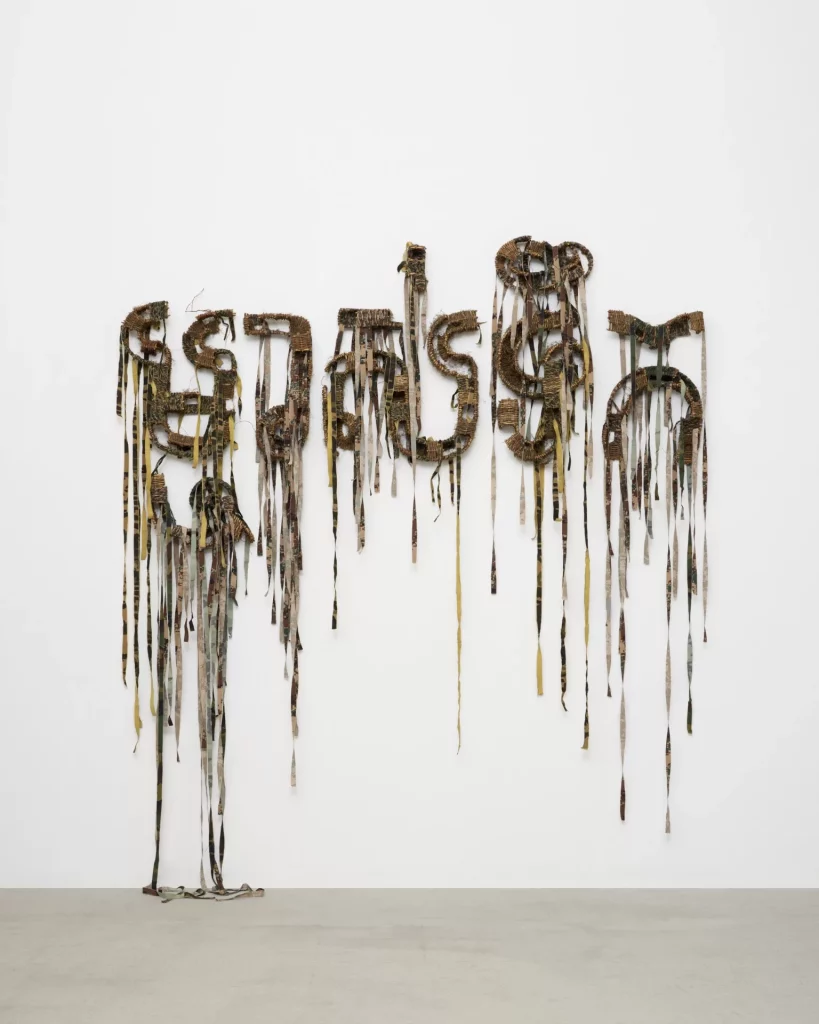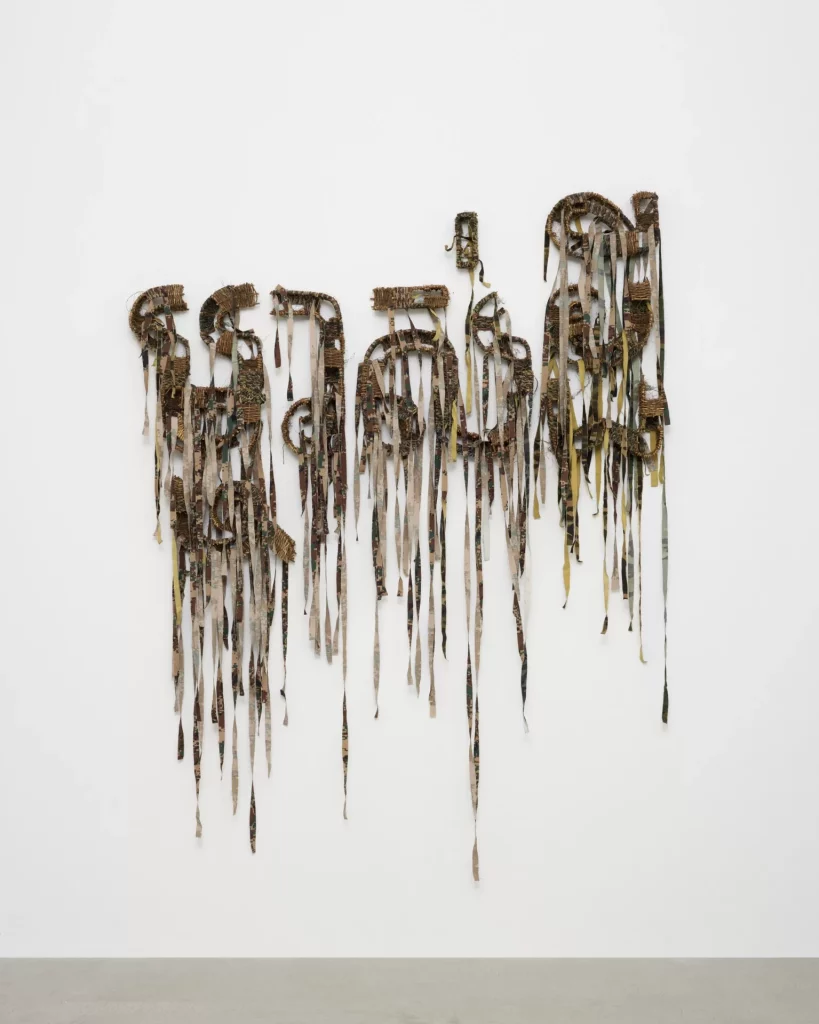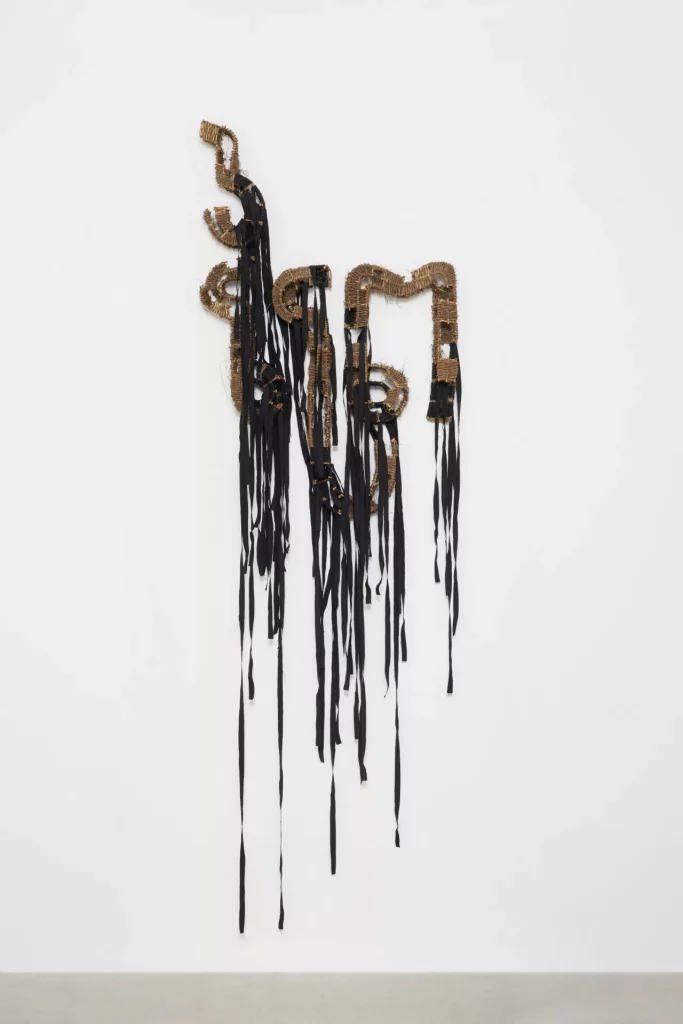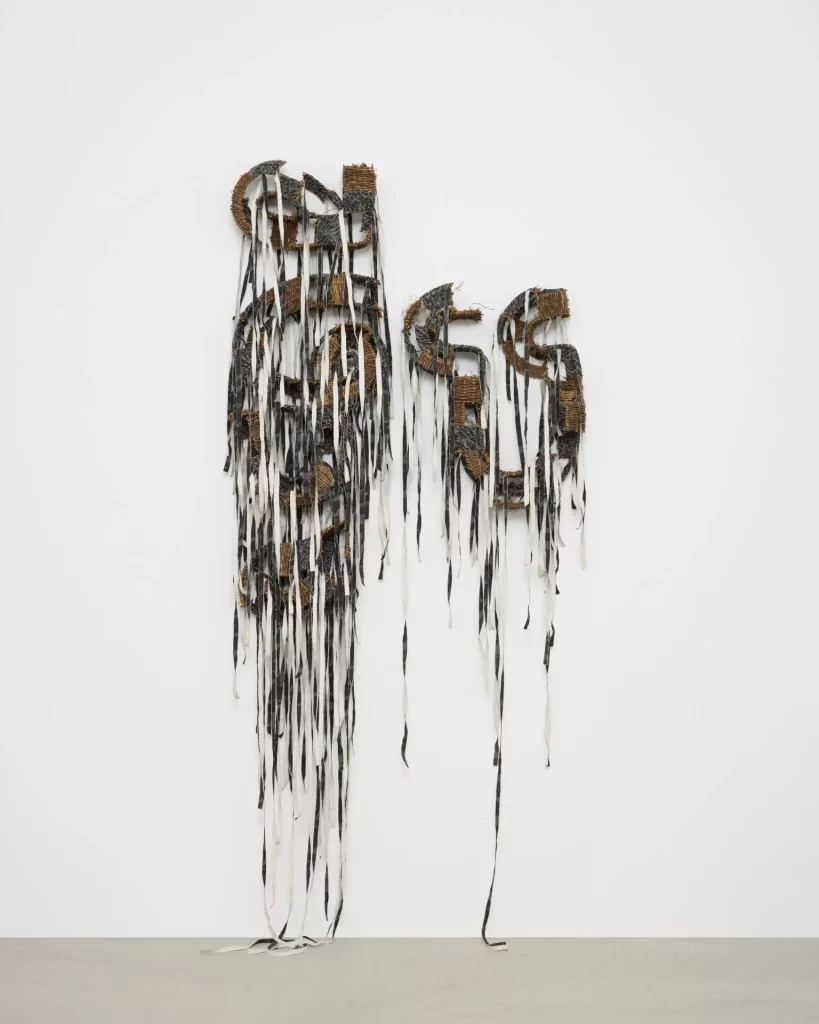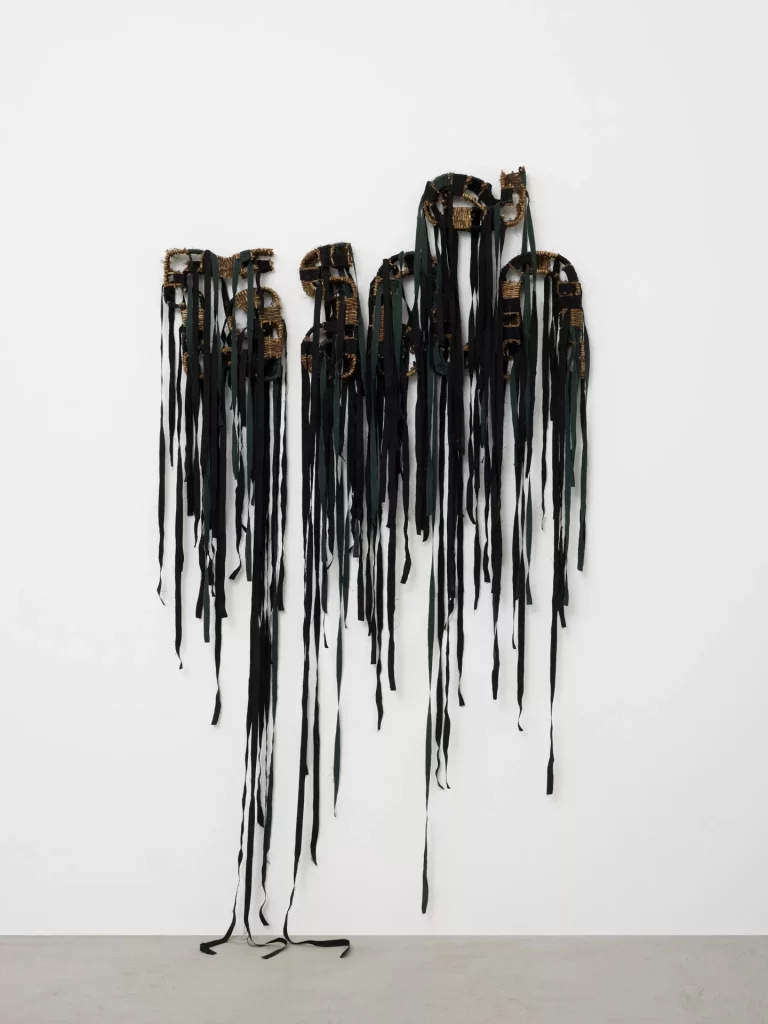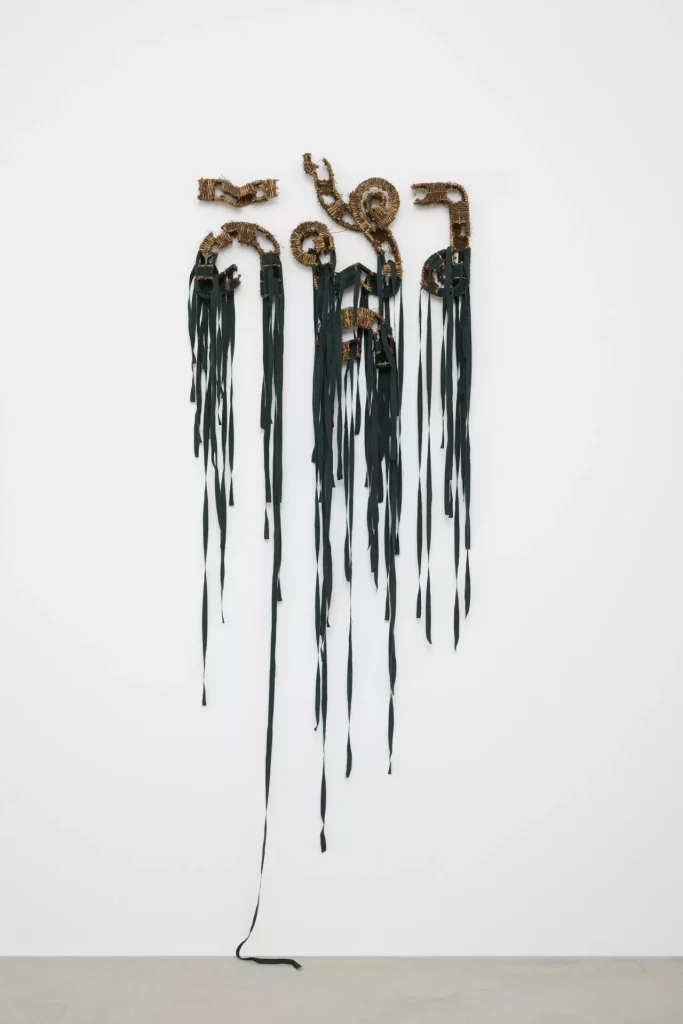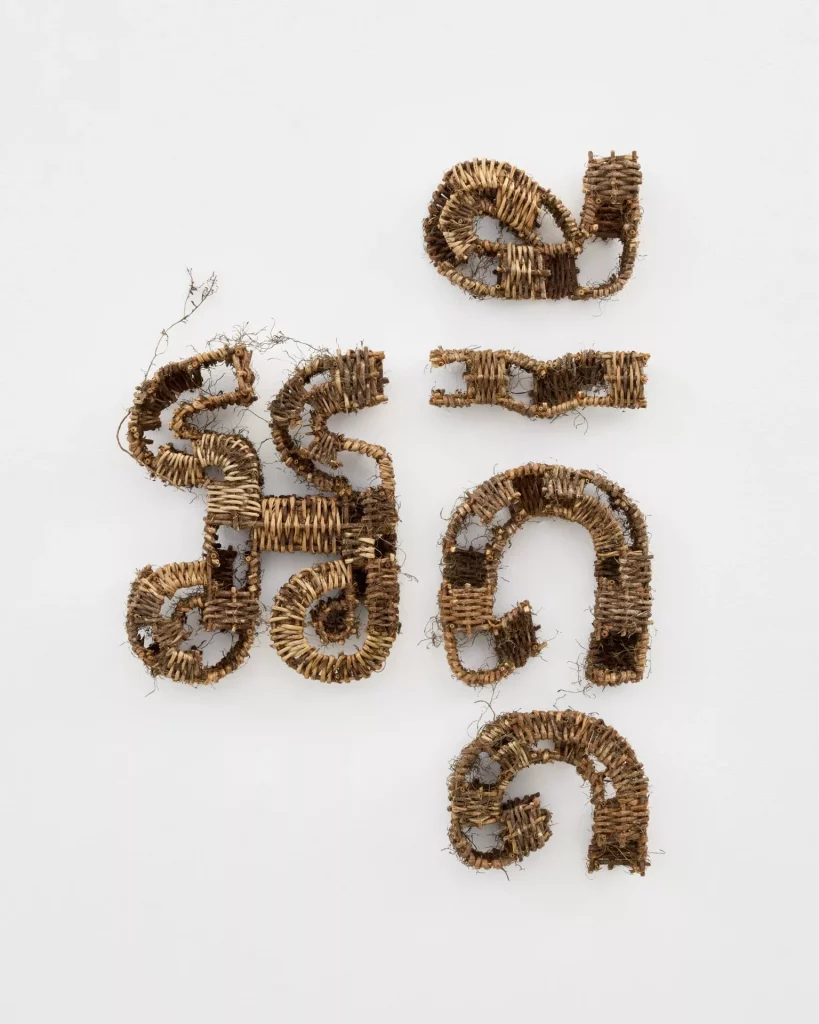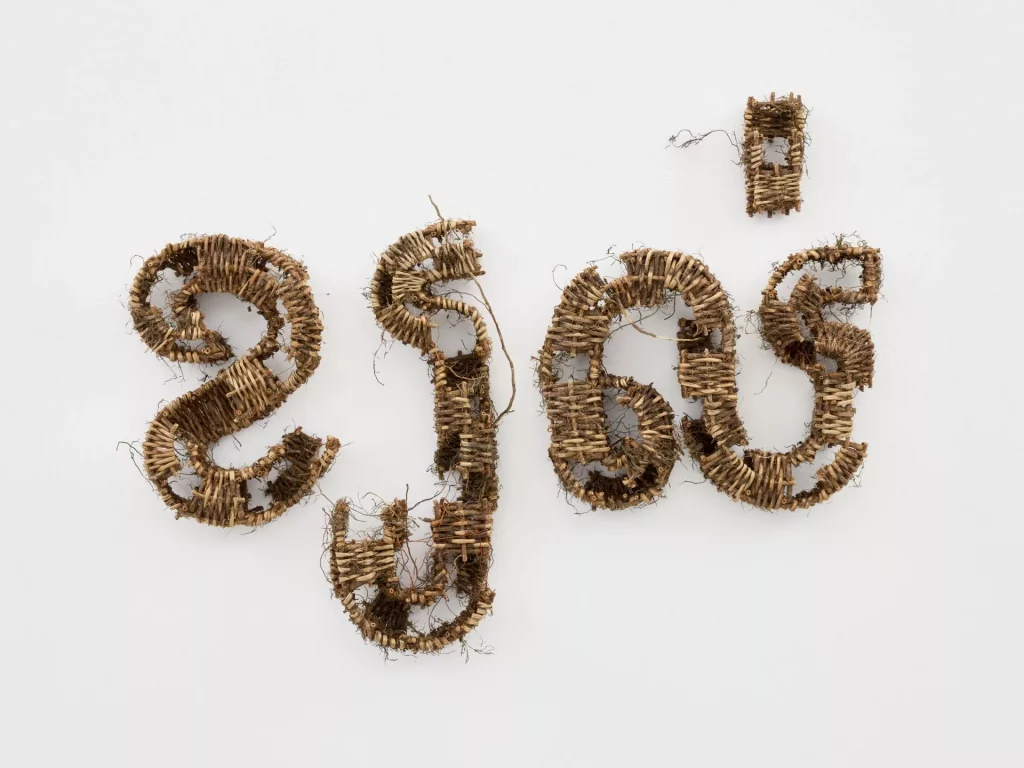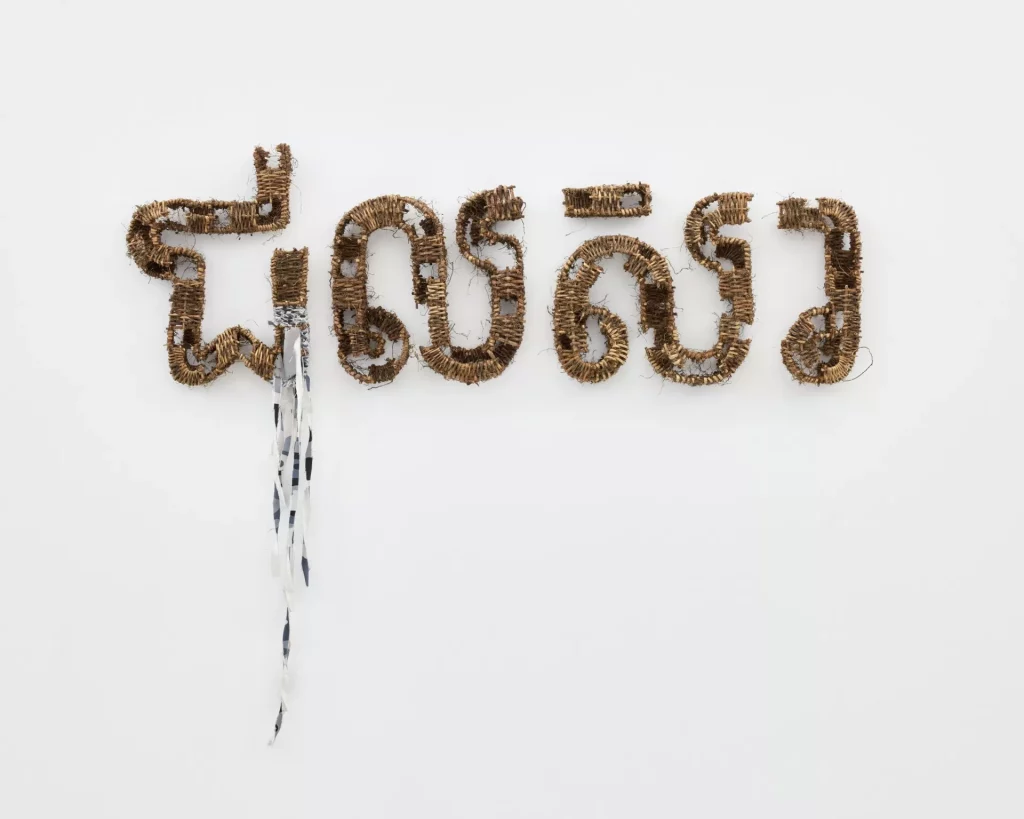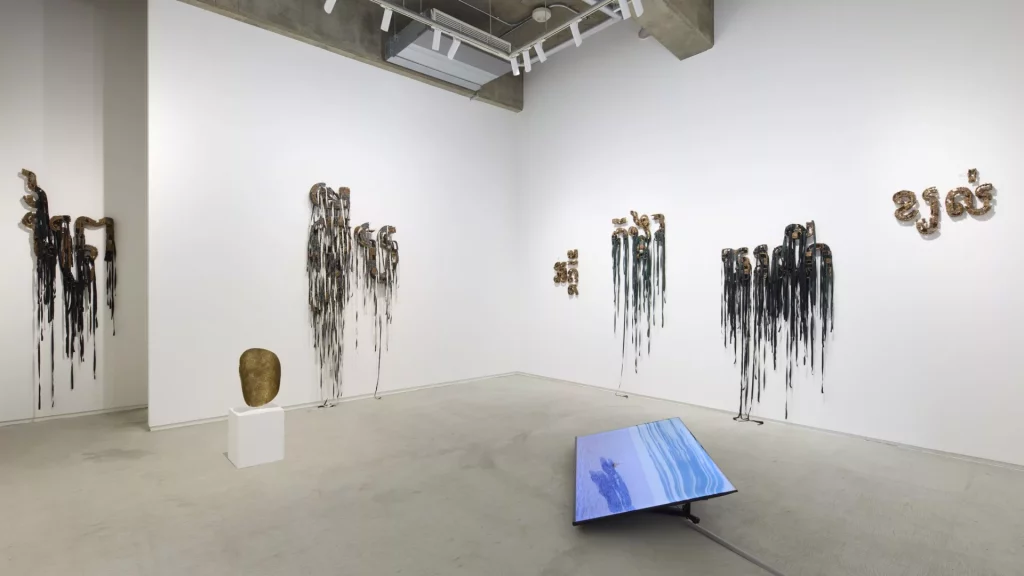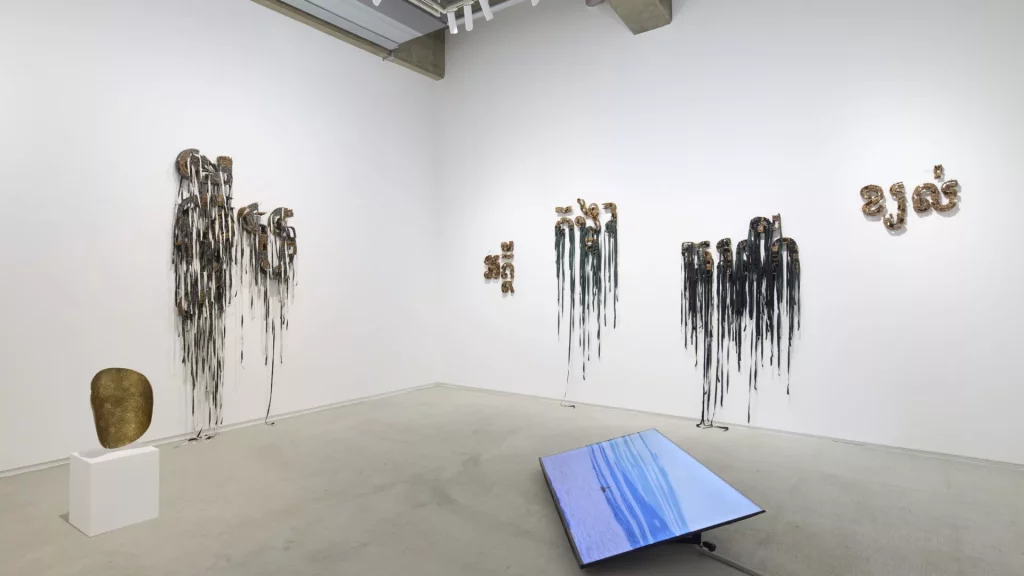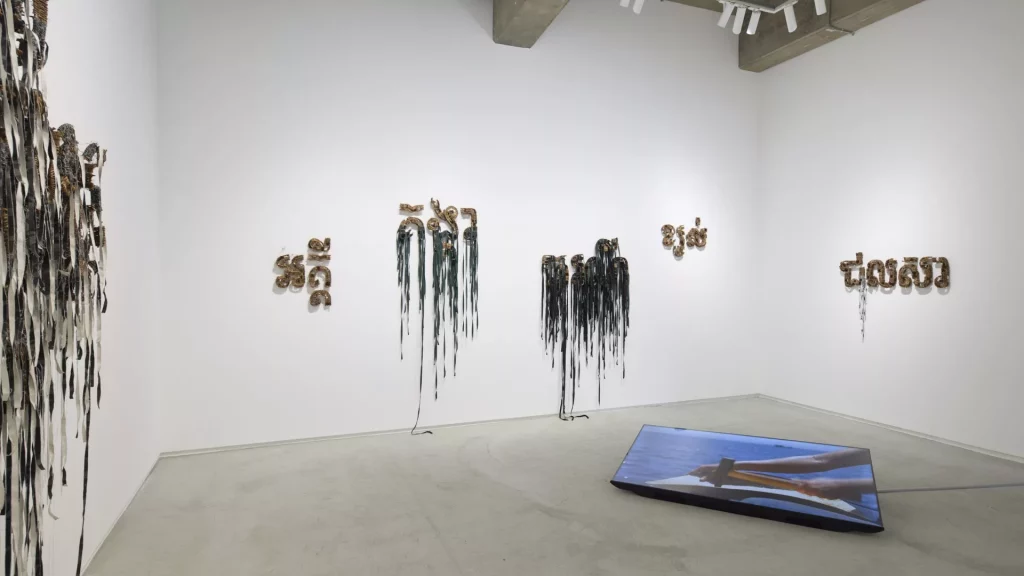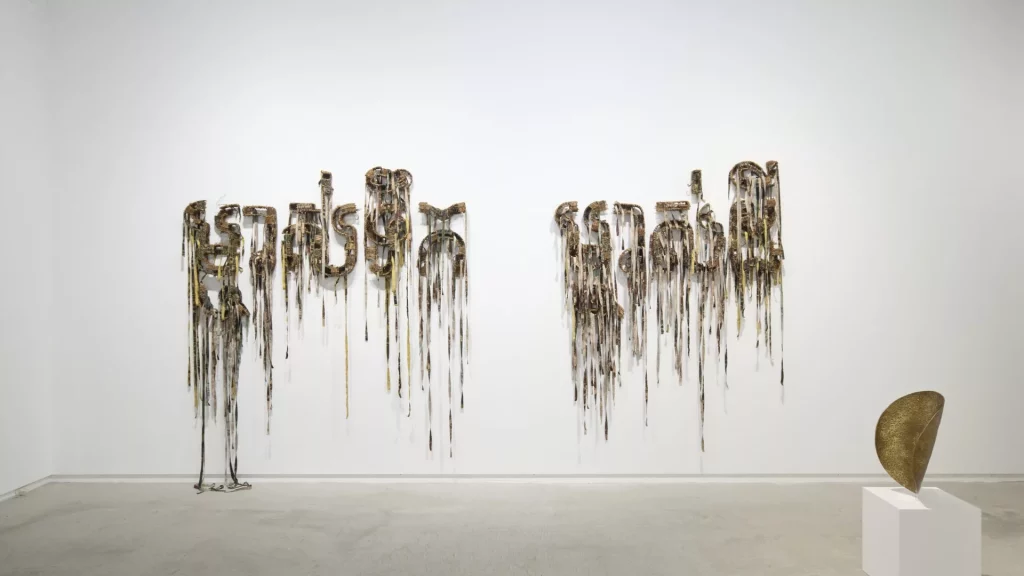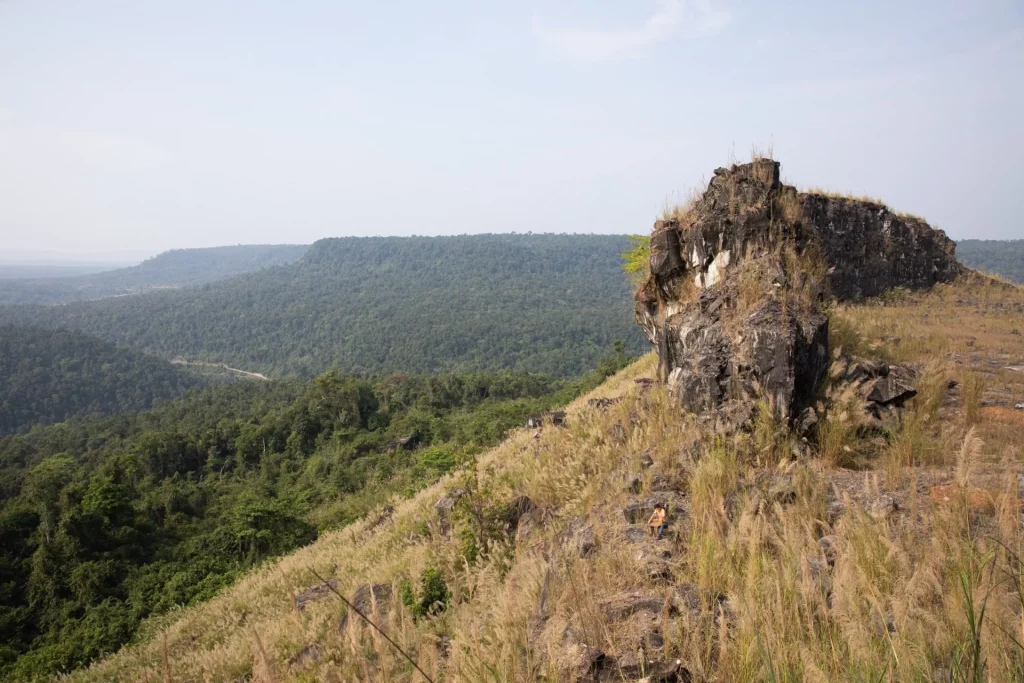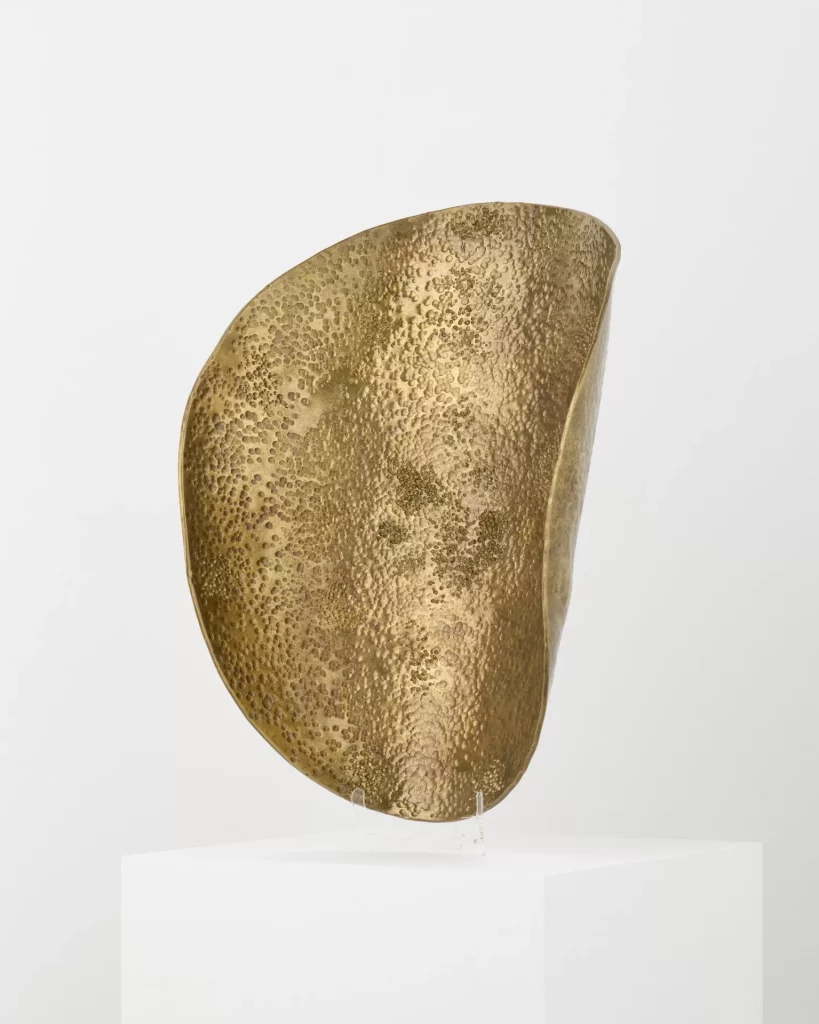Das Pralung (Rousing Spirits) I, 2024
- Single-channel HD video, color, sound, 22’29”, Edition of 5 + 2AP
- brass: 47.0 x 33.5 x 0.4 cm
- Installation of 9 wall-based sculptures which form words written in Khmer and Pali scripts. Variable dimensions
Das Pralung (Rousing Spirits) is a solo exhibition by Khvay Samnang, introducing a new series of works which speak to spirits called pralung. The works include wall-based sculptures which form words written in the Khmer and Pali scripts, and a single-channel video accompanied by a mysterious brass sculptural object. The concept of the pralung (spirits) derives from a complex system of animist beliefs, common in Cambodia, and also shared by the people of a vast region known as “Monsoon Asia,” extending well beyond the borders of contemporary Southeast Asia to include portions of Eastern India and Southern China (as studied in Calling the Souls – a Cambodian Ritual Text by the scholar Ashley Thompson). The artist’s new works focus on rituals and beliefs to do with both human and non-human aspects of nature, as well as the supernatural, animism, and the political and geographical environment. Samnang continues his longstanding interest in using the body to reflect on troubled sites. He observes that humans and nature have lost much of their respect for each other, due to overwhelming development, as well as global social and political confusion, turmoil, territorial disputes, and wars. These factors, and the erosion of respect between humans and nature, are having serious impacts on global climate change.
Upon entering the gallery, visitors are welcomed with the Khmer words Mchas Teuk (Master of Water) and Mchas Dei (Master of Land), made from woven vines, twisted with camouflage fabric. These words—which evoke various pralung (spirits)—connect Samnang’s new works with the title of a group exhibition he participated in with fellow co-founding artists of the artist-run space, Sa Sa Art Projects, in Phnom Penh in 2022. Samnang recognizes that today there are drastic changes in the relationships between people and nature, as well in the geopolitical situations of many countries. The land and environment are governed in ways that are increasingly fraudulent, opaque, and unstable. To Samnang, it seems there must be something behind all this uncertainty, and all these changes that make us feel invisible. Samnang questions: who is the master of land and water today? Do people today still belief in pralung like Nak Ta, the ancestors of humans and the land, and Mrenh Kongveal, the supernatural guardians?
On the other side of the gallery, there are four different word sculptures displayed in two rows, with Pali and Khmer letters spelling the words Kongkea (Water), Aki (Fire), Thorani (Earth), and Khyal (Air). These are metaphors for the four elements, which can sustain the birth of all living things on earth, including humans, animals, plants, and inanimate objects. In the animist belief systems of “Monsoon Asia,” as long as these elements are held together, everything is alive. But when these elements are separated, everything dies immediately.
Accompanying the word-based sculptural works in the exhibition, visitors are also invited to observe and contemplate a single-channel video and brass object displayed in the center of the gallery. For this video, Samnang decided to use his own body to perform, for the first time in more than ten years. He spent several hours a day, over the course of three days, under the hot sun. Sitting on a rattan chair, he is seen pounding and pounding on a brass object to create a vibrating sound. This rousing noise resonates through great forests— sites of abundant natural resources and rare wildlife—in Koh Kong province and at Koh Kong Krao island in Southern Cambodia, as well as on several small islands along the Mekong River in Northern Cambodia. Confronted with the state of the world today, Samnang’s feeling was that the pralung (spirits) that take care of the forests, including Nak Ta and Mrenh Kongveal, must have been sleeping soundly. By beating on the brass object, he wanted to awaken those spirits and rouse them into action, because the earth is in such a state of emergency. Nature is fragmented, and both geothermal and political events are causing global climate catastrophe. With his action, Samnang called to the pralung (spirits): Please rouse to unite and help each other intervene to restore the natural environment, and global geopolitics.
The works in Das Pralung (Rousing Spirits) offer a new landscape for visitors to connect and reimagine the relationships between humans, non-humans, language, and nature. The exhibition brings to the fore the complex interactions between the elements, the geographical and political environment, viewed through the lens of animist beliefs, which continue to shape the politics, economies, cultures, traditions, livelihoods, and essentially social structures of Cambodia and the wider region of Monsoon Asia. According to this system of knowledge, if any component of the ecosystem that comprises the natural environment, the beliefs in pralung (spirits), Nak Ta, Mrenh Kongveal, the geographical situation, the political situation, and the climate change have any kind of crisis, this may lead to risks, irregularities, and imbalance for lives and ecologies, whether they are visible or not.
Text by Chum Chanveasna
With thanks to Roger Nelson
